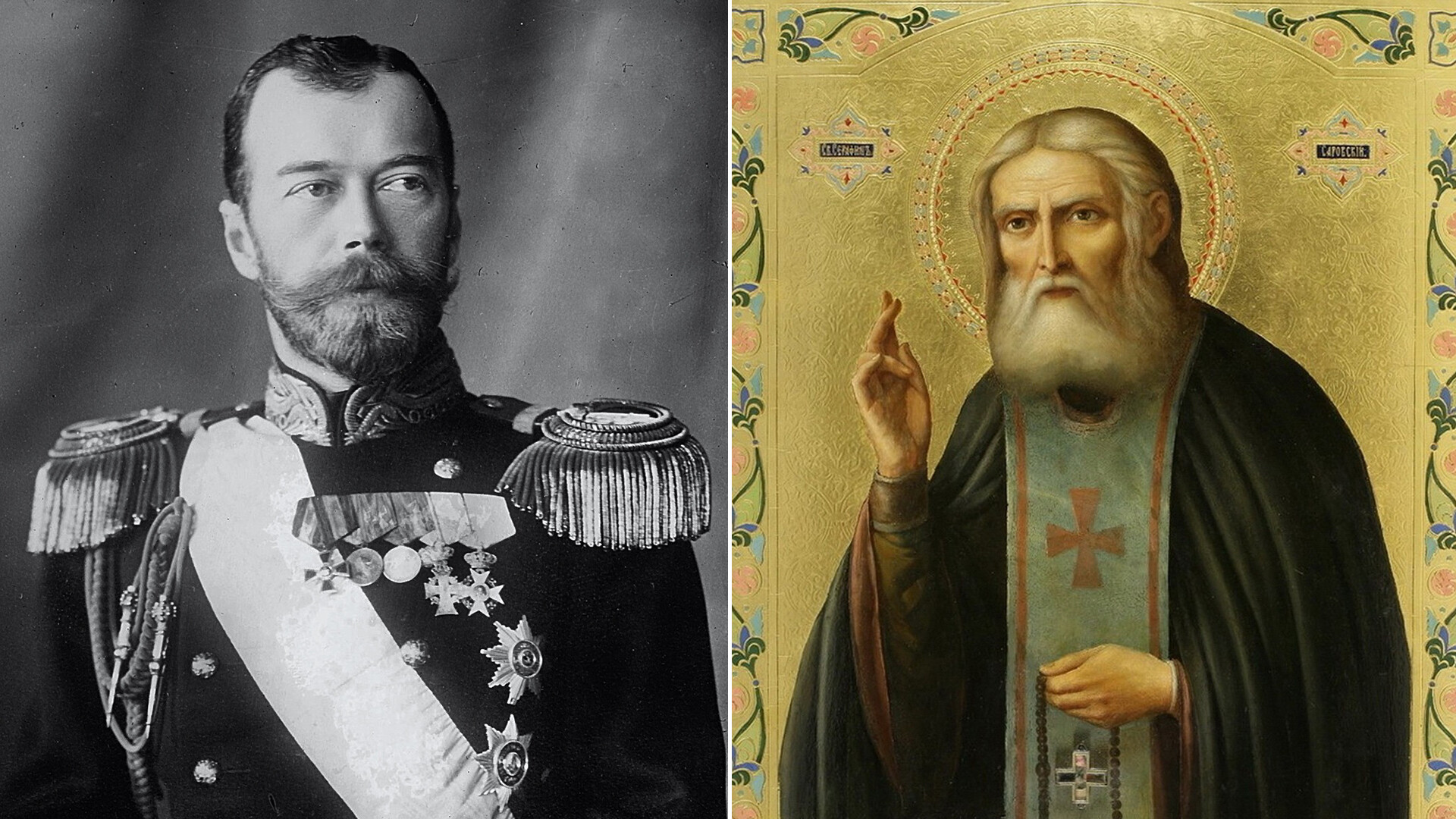
In 1833, the hieromonk (monastic priest) Seraphim died at the Sarov Monastery in the Tambov Province (now the Nizhny Novgorod Region) while saying his prayers. The extraordinarily pious elder had spent 30 years leading a secluded life, performing spiritual feats in a solitary cell in the woods. During his lifetime a great many people had flocked to him for help, and he provided it to everyone who came. His reputation for miraculous spiritual abilities quickly spread across Russia.
Talk of having the venerable hermit canonized began immediately after his death, but the issue dragged on and was only completed 70 years later by Nicholas II.
In 1881, the Russian Empire had faced nearly two centuries of domination by European fashion and trends. That year also saw the tragic assassination of Alexander II. His son, Alexander III, then ascended the throne, and he saw the influence of the West as something pernicious and blamed it for revolutionary sentiments and the emergence of terrorist groups.
Alexander III launched Russia on a path of conservatism and the rebirth of traditional, national culture. Strong as a bogatyr (a warrior of Russian folklore), once when the imperial train crashed, Tsar Alexander held the carriage roof on his shoulders until his family had escaped the wreck. He was a deeply religious person and a great admirer of all things Russian.
During his reign, the 'Russian style' of architecture came into fashion, with churches and houses being built that were infused with the style of ancient Russian fairytale terems. The best known example of this style is the Church of the Savior on Spilled Blood in St. Petersburg, which was built on the site of the assassination of Alexander II. As his beloved son, Alexander III personally approved the design of the church.

Portrait of Seraphim, 1828
Public domainAlexander III’s son, Nicholas II, was also committed to returning Russia to its roots. As Russia’s ruler, he was also determined to demonstrate his ardent religiosity and piety as an example to the nation. There are several known cases of the Emperor and his equally devout Empress meeting spiritual elders and "holy fools", and they both frequently communicated and socialized with priests.
During the reign of Nicholas II, more Russian saints were canonized than during the entire 18th and 19th centuries. In 1903, to mark the 290th anniversary of the House of Romanov, the Emperor personally insisted that Seraphim of Sarov be declared a saint.
In official Church circles the idea of glorifying the elder Seraphim of Sarov had arisen under Alexander III, but the most senior official supervising Church affairs - Ober Procurator of the Most Holy Synod of the Russian Orthodox Church, Konstantin Pobedonostsev - was strongly opposed to such a move. Even during his lifetime, Seraphim had been disliked by the Church hierarchy for his extreme informality and his "particular approach" to summoning (or being inspired by) the Holy Spirit. Among other things, Seraphim advised people who came to him to read the Gospels themselves (the official Church frequently insisted that a priest should explain the contents of the Gospels to ordinary people).
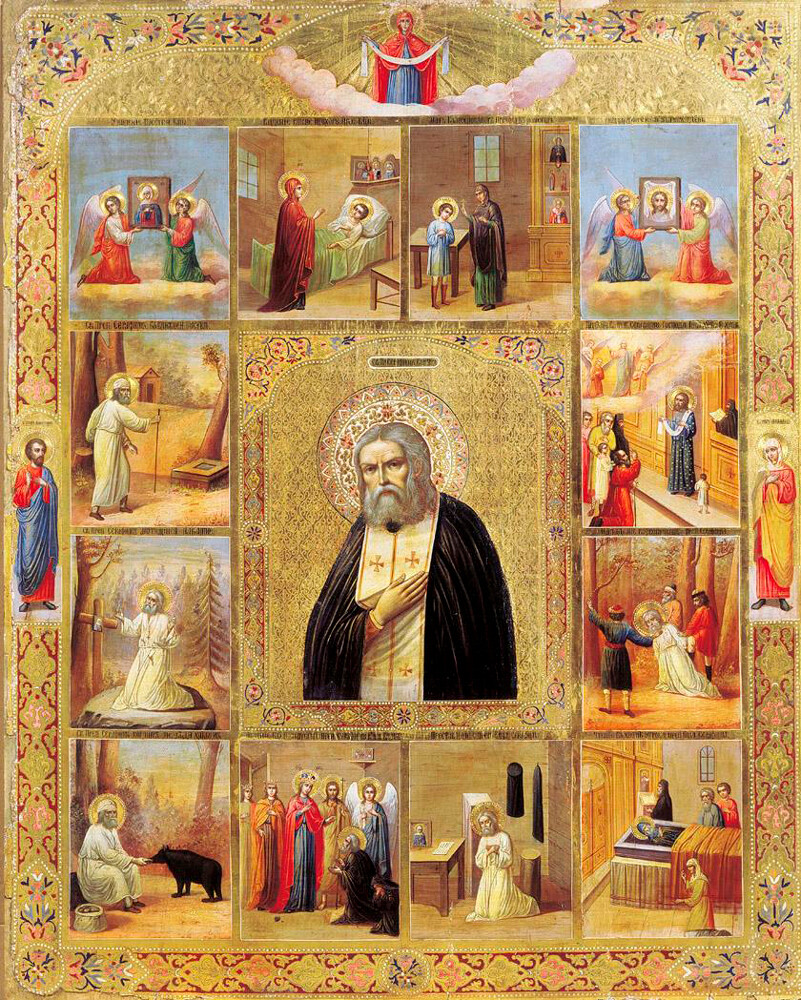
Hagiographic icon with the life of Seraphim of Sarov. Early 20th century
Public domainVarious clerics had already proposed his canonization several times, collecting evidence of miracles performed by Seraphim, but the Synod refused their requests. One day, Archimandrite Seraphim (Chichagov) was admitted to an audience with Nicholas II and personally presented him with his 'Chronicle of the Seraphim-Diveyevo Monastery', a book in which he set out testimony about the life and miracles of Seraphim of Sarov drawn from the convent archives. This made a strong impression on the Emperor and he ordered Pobedonostsev to draw up a decree giving the go-ahead for the canonization.
Popular love and reverence for Seraphim ran remarkably high. Thousands of pilgrims would make the journey to the Diveyevo Monastery, which the elder had founded, in order to pay their respects to his relics. Thus, for the Emperor, the canonization was also a gesture of goodwill to ordinary people, to whom he wanted to feel closer.
And yet, according to the accounts of contemporaries, Nicholas also had personal motives for the canonization of Seraphim. The Tsar had had four daughters in a row. The family desperately awaited the birth of a son and heir to the Russian throne. A devout Christian, Alexandra was advised to pray to none other than Seraphim.
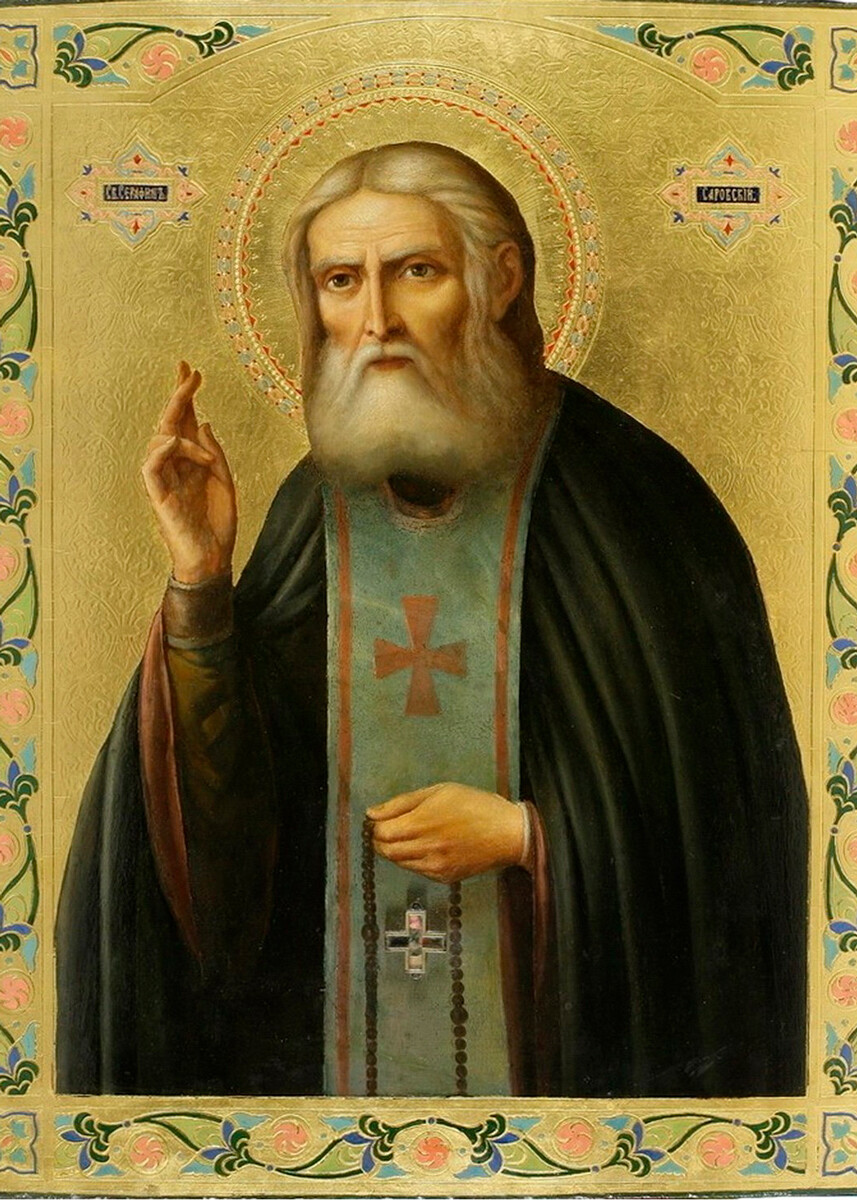
Icon of Seraphim of Sarov. Early 20th century
Public domainThe chairman of the Council of Ministers, Sergei Witte, believed that it was the Empress who had insisted on the canonization of the elder: "It is said that they were convinced that, after four grand duchesses, the Sarov saint would give Russia an heir."
Lavish celebrations were laid in July 1903 on to mark the canonization of Seraphim at his hermitage in Sarov, and the event was attended personally by the Emperor and his wife, and several other members of the imperial family.
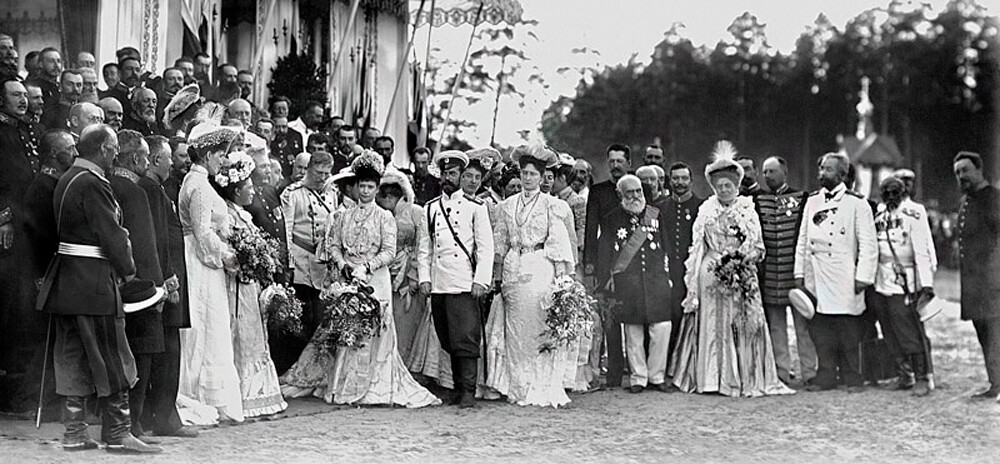
The Romanovs attending the Sarov festivities, 1903
Karl Bulla photo studio/russiainphoto.ruThe Romanovs traveled to Arzamas by train, and then went to Sarov by carriage. The Tsar visited the cell where the holy man had lived, and attended a solemn memorial service for the Venerable Seraphim in the Dormition Cathedral, to which the saint's remains had been transferred. In the course of the procession he personally carried the coffin containing the remains on a stretcher.
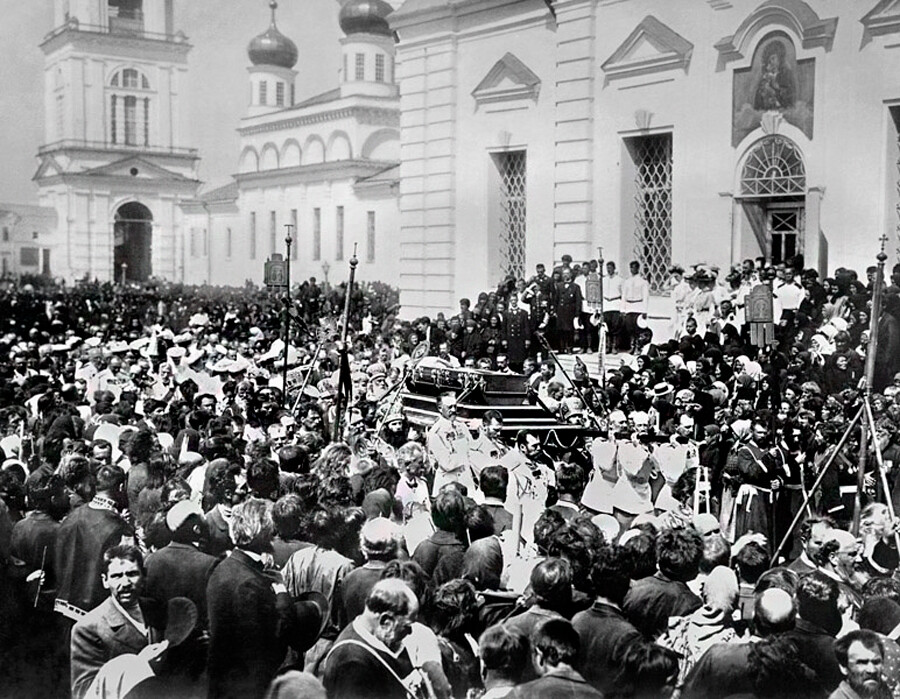
Nicholas II and family members carrying a shrine with Seraphim relics during the solemn canonization festivities in Sarov. August 1 (O.S. July 19), 1903
Karl Bulla/russiainphoto.ruNicholas II left a fulsome entry in his diary about that day: "It left a tremendous impression: seeing how the people, and particularly the sick, the lame and the unfortunate, reacted to the procession. It was a very solemn moment when the glorification and then the veneration of the relics began."
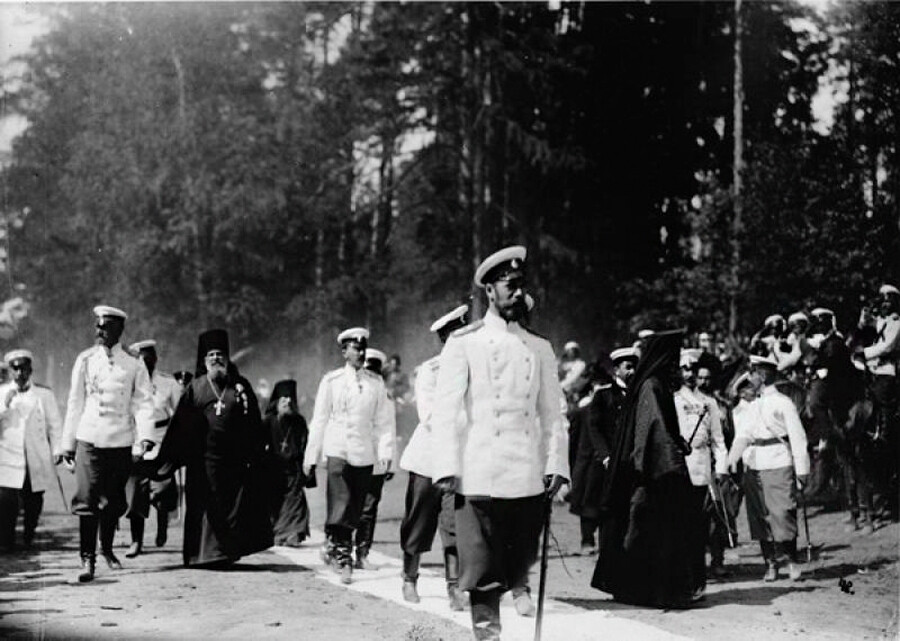
Nicholas II in Sarov, July 1903
Russian State Film and Photo Archives, Krasnogorsk/russiainphoto.ruNicholas's hopes were not in vain. A year later, in 1904, Empress Alexandra gave birth to the Tsesarevich Alexei, thus conclusively coming to believe that the decision had been the correct one and putting her faith even more strongly in Saint Seraphim.
Dear readers,
Our website and social media accounts are under threat of being restricted or banned, due to the current circumstances. So, to keep up with our latest content, simply do the following:
If using any of Russia Beyond's content, partly or in full, always provide an active hyperlink to the original material.
Subscribe
to our newsletter!
Get the week's best stories straight to your inbox